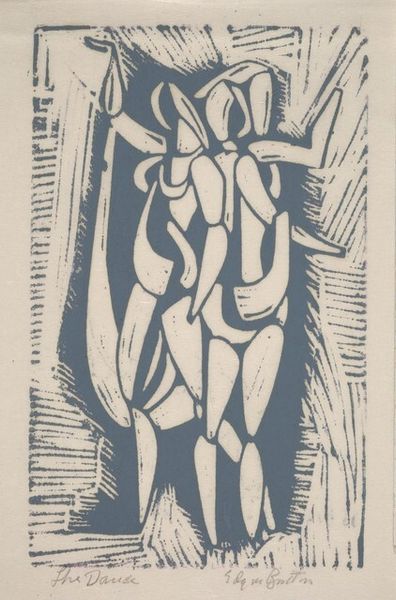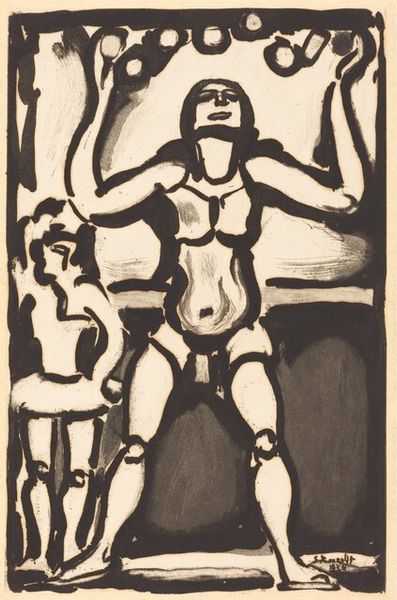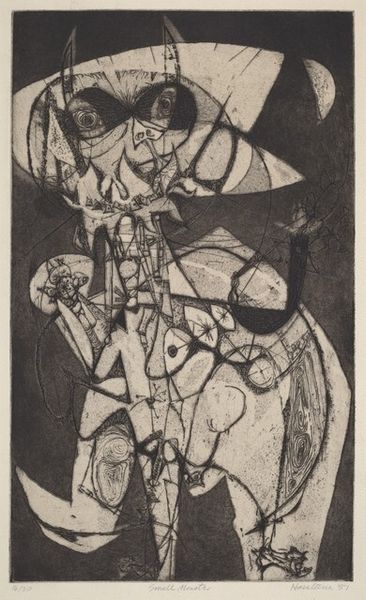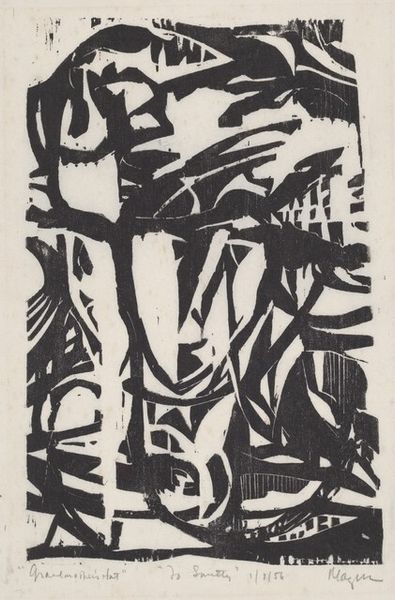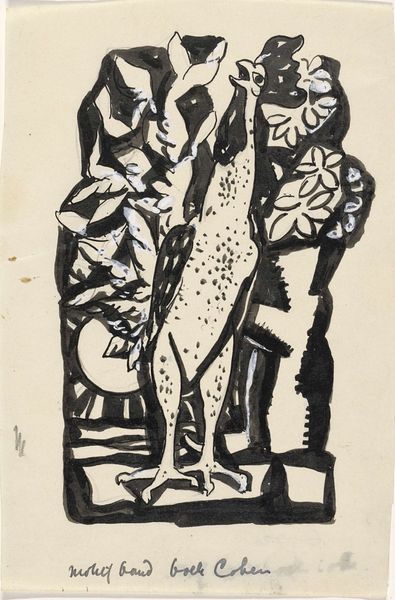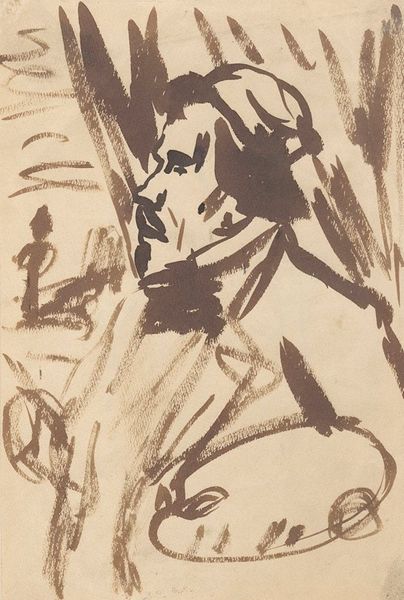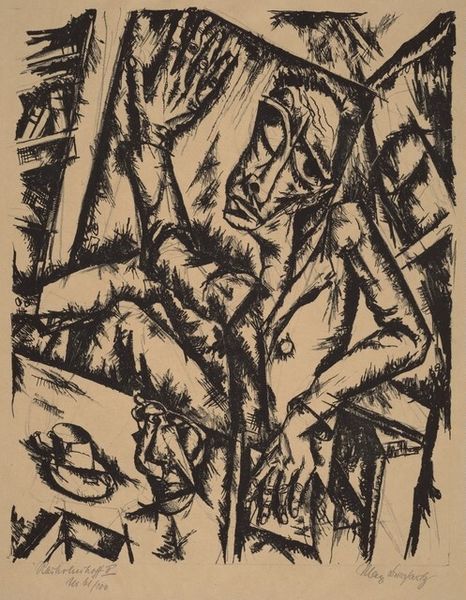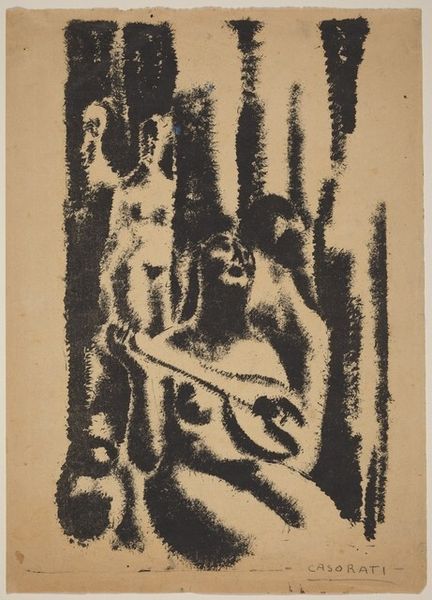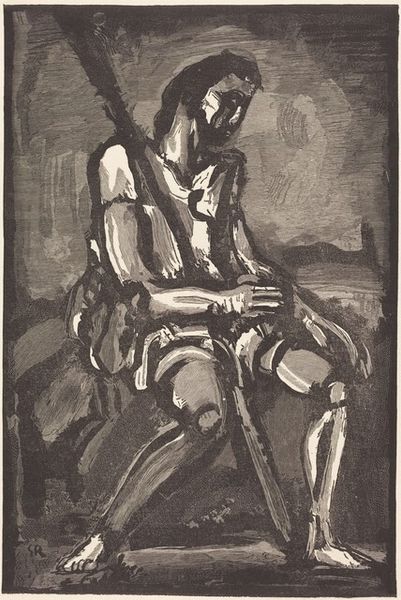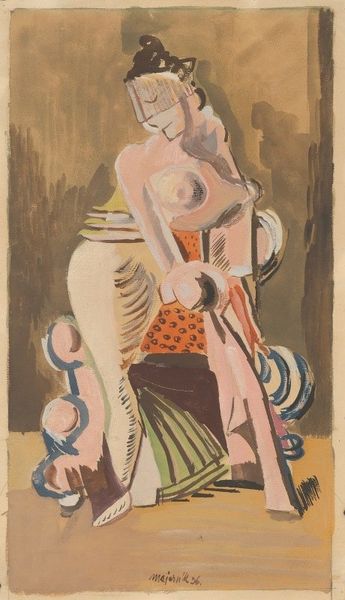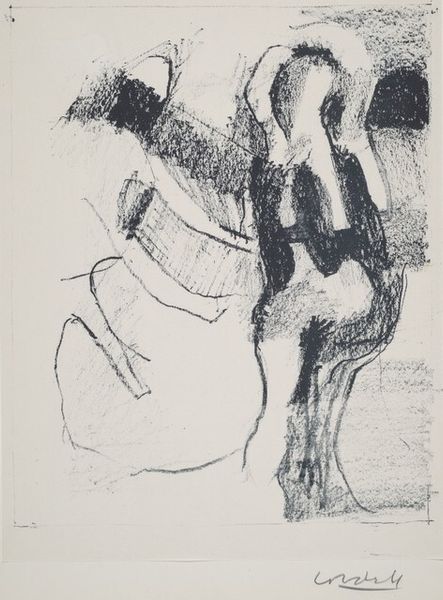
Copyright: National Gallery of Art: CC0 1.0
Curator: Let’s take a look at Georges Rouault's "Master Arthur" from 1934, a compelling print in black and white. Editor: My first impression is stark. The contrasts create a dramatic and unsettling mood, almost like a dark theatre scene. The forms seem both solid and fragmented. Curator: Indeed. Rouault employs an expressionistic style that underscores emotional intensity over realistic depiction. Note the thick, almost brutal, lines which delineate form, and also how the limited palette forces the viewer to concentrate on tonal variations and textures. Editor: Considering Rouault’s recurring engagement with societal critiques, could "Master Arthur" be a commentary on power dynamics? The towering figure, if Arthur is indeed the subject, casts a long shadow over the kneeling figure, hinting at hierarchical structures and perhaps, oppression. Curator: It’s interesting that you suggest that relationship between them is oppressive! While that interpretation holds water given Rouault's concerns with human suffering and injustice, I suggest it's the relationship of dominance and subdominance that gives rise to meaning here. Note how his expressionist use of black ink creates depth and pulls your eye up to meet Arthur's face; Arthur is monumental precisely because his form rises off of the smaller subject's grounded presence. Editor: Still, these simplified figures remind me of medieval morality plays, archetypes embodying virtues and vices in ways that highlight inequality as something inherent to Arthurian legend. He appears to dominate physically, yet perhaps his distorted facial features expose a vulnerability or even moral deficiency. Curator: Precisely, such use of caricature offers layers to unpack! It allows Rouault to engage simultaneously with aesthetics and socio-political realities, critiquing and commenting on the power and fragility within us all. Editor: So, perhaps Arthur stands not merely as a king, but a symbol, prompting discourse around the legacies of authority and those upon whom it rests? Curator: Exactly! It leaves me thinking about representation and the capacity of line to carry social commentary within itself. Editor: I’m more interested in how Rouault makes us reconsider archetypal stories by pointing towards who is in power and who is disempowered within them.
Comments
No comments
Be the first to comment and join the conversation on the ultimate creative platform.

